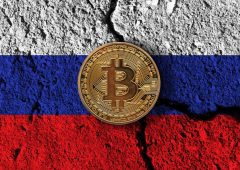Trump’s Bitcoin Reserve Proposal Sparks Strong Opposition
10.12.2024 13:00 1 min. read Alexander Zdravkov
Donald Trump’s suggestion to establish a national Bitcoin reserve has generated strong reactions, particularly from former Treasury Secretary Larry Summers, who criticized the idea as unrealistic and driven by political motives.
Speaking on Bloomberg TV, Summers, who previously managed the U.S. gold reserves under Bill Clinton, dismissed the concept as “crazy,” emphasizing that unlike gold or oil, Bitcoin lacks tangible uses or strategic importance.
Summers also questioned the rationale behind the proposal, suggesting that it was more about appeasing donors within the cryptocurrency industry than serving any national interest. He described Bitcoin as an “unproductive inventory” with no clear purpose for a national reserve.
The proposal was first floated by Trump at a Bitcoin conference in July, where he outlined plans to counter global competitors like China by establishing a Bitcoin reserve.
Crypto-supportive Senator Cynthia Lummis has since backed the idea, proposing a bill that would have the U.S. government acquire one million Bitcoins over five years, a move that would cost roughly $100 billion at current prices. Advocates for the reserve believe it could help reduce the national debt and offer a new way to bolster the dollar, though critics remain unconvinced about its practicality.
-
1
Bitcoin: Is the Cycle Top In and How to Spot It?
09.07.2025 16:00 2 min. read -
2
Crypto Inflows hit $1B Last Week as Ethereum Outshines Bitcoin in Investor Sentiment
07.07.2025 20:30 2 min. read -
3
Public Companies Outpace ETFs in Bitcoin Buying: Here is What You Need to Know
02.07.2025 12:30 2 min. read -
4
Robert Kiyosaki Buys More Bitcoin, Says He’d Rather Be a ‘Sucker Than a Loser’
02.07.2025 22:00 1 min. read -
5
This Week in Crypto: Whale Accumulation, Ethereum Signals, and a Sentiment Shake-Up
05.07.2025 21:00 3 min. read
Over $5.8 Billion in Ethereum and Bitcoin Options Expired Today: What to Expect?
According to data shared by Wu Blockchain, over $5.8 billion in crypto options expired today, with Ethereum leading the action.
IMF Disputes El Salvador’s Bitcoin Purchases, Cites Asset Consolidation
A new report from the International Monetary Fund (IMF) suggests that El Salvador’s recent Bitcoin accumulation may not stem from ongoing purchases, but rather from a reshuffling of assets across government-controlled wallets.
Ethereum Sparks Altcoin Season as FOMO Shifts Away From Bitcoin
Traders are rapidly shifting their focus to Ethereum and altcoins after Bitcoin’s recent all-time high triggered widespread retail FOMO.
BSTR to Launch With 30,021 BTC, Becomes 4th Largest Public Bitcoin Holder
BSTR Holdings Inc. is set to become the fourth-largest public holder of Bitcoin, announcing it will launch with 30,021 BTC on its balance sheet as part of its public debut.
-
1
Bitcoin: Is the Cycle Top In and How to Spot It?
09.07.2025 16:00 2 min. read -
2
Crypto Inflows hit $1B Last Week as Ethereum Outshines Bitcoin in Investor Sentiment
07.07.2025 20:30 2 min. read -
3
Public Companies Outpace ETFs in Bitcoin Buying: Here is What You Need to Know
02.07.2025 12:30 2 min. read -
4
Robert Kiyosaki Buys More Bitcoin, Says He’d Rather Be a ‘Sucker Than a Loser’
02.07.2025 22:00 1 min. read -
5
This Week in Crypto: Whale Accumulation, Ethereum Signals, and a Sentiment Shake-Up
05.07.2025 21:00 3 min. read


